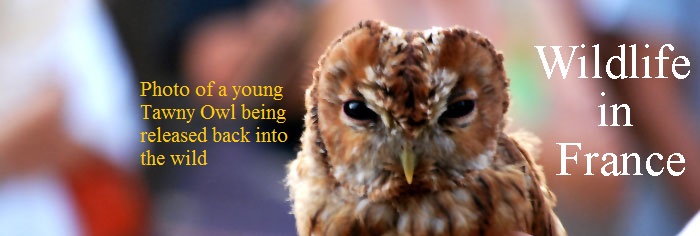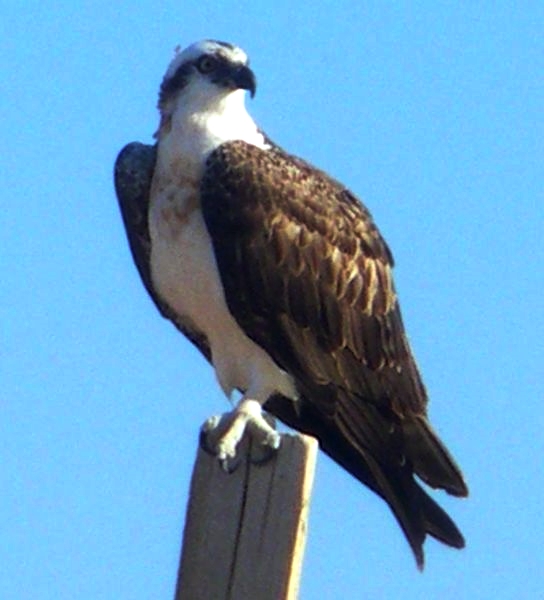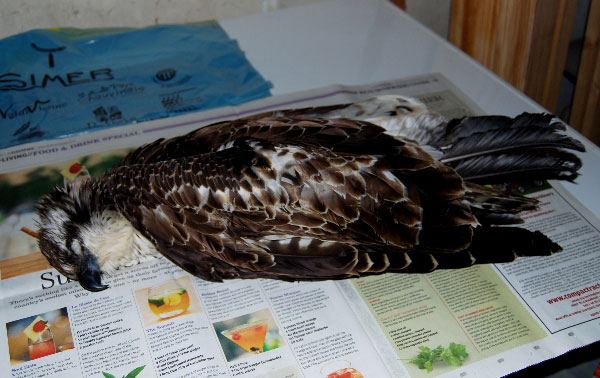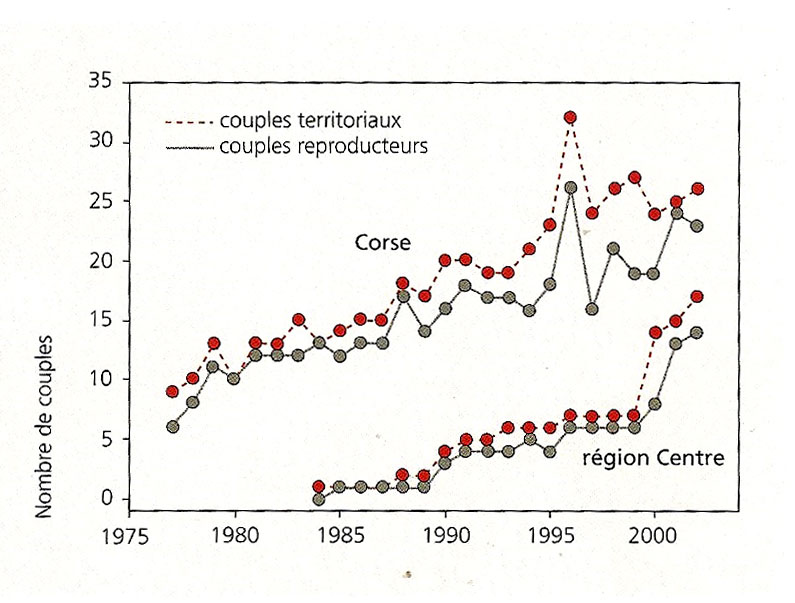

Osprey (Pandion haliaetus)
Balbuzard pêcheur
Overview - France
A migratory
bird, the Osprey’s main breeding grounds are in
It was in the late 19th century that the Osprey became extinct as a nesting bird in Continental France as a result of persecution, shooting, nest destruction and trapping that was actively encouraged by law “C'est la classification de cette espèce en "gibier nuisible" par la loi du 7 mai 1883, ainsi que l'attribution d'une prime par tête abattue.” A payment being made for every Osprey shot and killed.
Osprey, as
with all species of raptors, have been protected in
The first
group never quite disappeared from the island of Corsica where there
were four couples left in 1974 that have since grown to between 25 and
30 nesting couples in a zone in the réserve de Scandola in the north
west of Corsica. This group is defined as “
The second
group of French Osprey are migratory and defined as “Continental”. With
these the first couple successfully bred in the forêt d’Orléans, Loiret
in 1985 at l’étang du Ravoir followed by two other couples in 1991 and
three others in 1993. In 2012 Loiret retains its importance with 20 of
the 31 breeding pairs in the Centre region with Osprey also present in
Maine-et-Loire, Yonne and
Appearance.
Eagle like in
appearance, the Osprey is a very distinctive medium large bird of prey
with rich dark chocolate brown upper parts contrasting with snow white
under parts that is often flecked with chestnut brown in the case of
females. White legs, blue talons and white head with a broad dark band
though each eye. The wings are long, narrow and angled with white
undersides and rows of small dark spots with black carpal patches. When
seen flying towards you they have the appearance of a shallow “M” shape.
The tail is relatively short and barred. There is almost no visible
difference between males and females although males tend to be somewhat
smaller.

Behaviour,
Habitat and Diet.
They are invariably to be found near to water - large lakes, rivers,
larger canals and the coastline where they can find ample supplies of
fish that make up their entire diet. When seeking prey they will usually
be seen hovering in a rather heavy manner, perhaps as high as 200 metres
above the water, although more usually at about 30 to 40 metres. Once a
fish has been spotted they will dive almost vertically towards it, then
at the last moment before impact with the water they thrust their talons
forwards to snatch the fish, often becoming fully immersed in the water.
It then has to struggle free of the water and get airborne again with a
fish that can weigh as much as 2kg. For aerodynamic reasons, as soon as
they are airborne they manipulate the fish in their talons so that the
head of the fish is pointing forwards. Their talons have evolved to
allow one toe to bend backwards so that they have two claws pointing
forwards and two pointing backwards to enable them to get a good grip on
their prey. When not hunting for food they will usually be seen perched
on a post, a dead branch or a large rock
Status,threats and menaces
The main threat is from
electrocution via overhead power lines frequently caused when an Osprey
is carrying a fish that makes contact and shorts the current. Shooting
still remains a serious problem possibly due to them taking fish from
fish farms and leisure fishing lakes.

Wing span: 145
-170 cm
Weight: Female
1700 g, Male 1400 g.
Life span: Up
to 27 years in the wild. They do not take to being kept in captivity and
will die on average after 2 years.
Reproducing
couples remain loyal to both each other and their nest site.
Females produce
1 to 4 eggs and do all the incubating and tending for the young while
the male provides her and the young with food.


